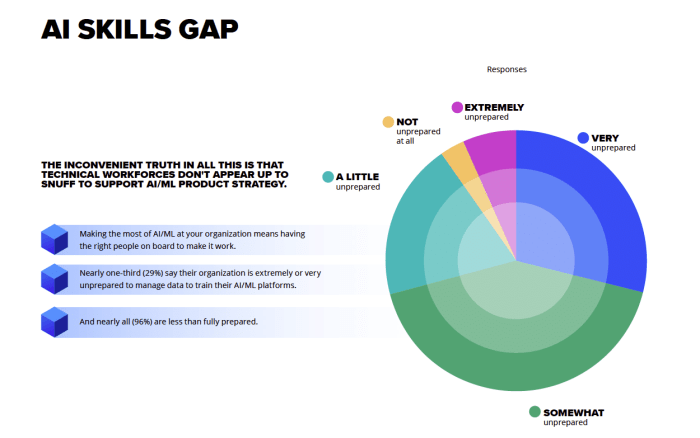
Why AI progress is increasingly invisible? This question delves into the often-unseen advancements in artificial intelligence, exploring how subtle yet significant improvements are slipping under the radar. From refined algorithms to integrated systems, AI’s evolution is often masked, leaving the public unaware of its pervasive influence.
The nature of AI’s invisibility stems from several key factors. Technical jargon and the complexity of AI systems themselves create barriers to understanding. Furthermore, advancements are frequently integrated into existing tools and services without explicit announcements. This leads to a lack of public awareness despite substantial progress across various sectors, from healthcare to finance.
The Nature of Invisibility
AI progress often unfolds subtly, woven into the fabric of our daily lives. We rarely see the intricate algorithms improving, the hidden advancements refining existing systems. This “invisible progress” is a key characteristic of contemporary AI development, and its understanding is crucial for comprehending its impact.The advancement of AI is not always a dramatic leap forward, but rather a series of small, incremental improvements.
These improvements, while individually seemingly insignificant, can collectively produce significant shifts in capabilities and applications. This gradual nature of progress often masks the profound effects on various sectors.
Examples of Seemingly Minor Advancements with Significant Impacts
Incremental improvements in AI algorithms can lead to dramatic changes in performance and applications. Consider natural language processing (NLP). A seemingly small enhancement in a model’s ability to understand nuanced language can translate into more accurate sentiment analysis for market research, more effective customer service chatbots, or even improved language translation. These advancements, while often invisible to the end-user, have a profound impact on businesses and individuals.
AI Advancements Integrated into Everyday Tools and Services
Many AI advancements are seamlessly integrated into everyday tools and services without public recognition. Consider the predictive text features on smartphones. These features leverage AI to anticipate words and phrases, making typing more efficient. Similarly, spam filters on email services, personalized recommendations on streaming platforms, and even the accuracy of search results are all powered by evolving AI algorithms.
These improvements, though unassuming, enhance our daily experiences.
The Complexity of AI Systems and Invisibility
Modern AI systems are incredibly complex, composed of intricate interconnected components. This complexity makes it challenging to isolate specific advancements and understand their individual impact. New models often build upon previous ones, making the lineage of progress diffuse and less visible. Understanding the subtle improvements requires a deep understanding of the underlying architecture and the interplay of various components.
Furthermore, the black box nature of some advanced AI models adds to the invisibility, making it difficult to identify specific improvements. For instance, a new image recognition model might improve its accuracy by 1%, but this percentage change is masked within the overall system’s complexity.
AI progress is getting harder to spot, like a magician pulling a rabbit from a hat so quickly you barely see it. It’s becoming so incremental that the sheer volume of advancements blurs the line between revolutionary and routine. Take the recent Donald Trump inauguration speech, for example donald trump inauguration speech. While seemingly a political event, the speech subtly reflects AI’s influence, in ways we’re only just starting to grasp.
This gradual, pervasive integration is why we’re missing the bigger picture of AI’s impact.
Factors Contributing to Invisibility

The rapid advancement of artificial intelligence (AI) often feels like a silent revolution. While headlines frequently trumpet breakthroughs, the underlying progress frequently goes unnoticed by the public. This invisibility stems from a multitude of factors, ranging from the technical complexities of the field to the ways AI is seamlessly integrated into existing systems. Understanding these factors is crucial to appreciating the true extent of AI’s impact on our lives.AI’s progress is often obscured by a veil of technical jargon and specialized terminology.
This specialized language, while essential for experts, creates a barrier for the general public, making the implications of these advancements difficult to grasp. Furthermore, the pace of progress is often so rapid that it’s difficult to keep up, leaving many feeling out of the loop.
Specialized Terminology and Jargon
AI research frequently employs complex mathematical models, algorithms, and specialized terminology that can be impenetrable to those without a technical background. Terms like “neural networks,” “deep learning,” and “machine learning” are common but often evoke images of abstract concepts rather than tangible applications. This linguistic barrier prevents the public from fully understanding the significance of advancements. For example, the development of sophisticated image recognition algorithms might be described using intricate technical language, obscuring the practical applications, such as improved medical diagnoses or enhanced security systems.
Integration into Existing Systems
A significant contributor to the invisibility of AI progress is the way AI improvements are often integrated into existing systems without explicit fanfare. Instead of being presented as standalone innovations, AI is frequently incorporated into software applications, hardware devices, and services, often without a public announcement or explicit marketing. This gradual integration, while effective for improving efficiency and functionality, often makes it difficult for the general public to perceive the impact.
For instance, an improved recommendation engine within an online shopping platform might enhance user experience, but its AI-driven nature remains largely invisible to the end-user.
Different Types of AI Progress Perception
Public perception of AI progress varies depending on the specific type of advancement. Machine learning, often associated with more predictable and gradual improvements, might receive less attention than breakthroughs in deep learning, which are sometimes presented as revolutionary. This difference in public perception is driven by the perceived novelty and potential impact of the technology. Machine learning’s incremental improvements often go unnoticed within existing systems, while deep learning’s more dramatic capabilities tend to generate more media coverage.
AI progress feels subtle, almost hidden in plain sight. It’s like watching the slow, steady burn of a wildfire, rather than a dramatic explosion. Take, for example, the historical context of Los Angeles wildfires – los angeles wildfires history reveals a pattern of gradual, often unnoticed changes that eventually lead to devastating consequences. Similarly, incremental improvements in AI are absorbed into existing systems, making the overall advancements hard to perceive, but no less impactful in the long run.
Sectors Where AI Progress is Invisible
| Sector | Examples of Invisible AI Progress |
|---|---|
| Healthcare | Improved diagnostic tools integrated into medical imaging software; personalized treatment plans based on patient data analysis; AI-powered drug discovery pipelines. |
| Finance | Fraud detection systems; algorithmic trading; credit risk assessment models; personalized financial advice based on user data. |
| Transportation | Self-driving car technology; optimized traffic flow management systems; predictive maintenance for vehicles; improved navigation apps based on real-time data. |
| Retail | Personalized product recommendations; inventory management systems; chatbots for customer service; optimized pricing strategies. |
Public Perception and Understanding
The increasing sophistication of AI often goes unnoticed by the public. This invisibility stems not only from the technical complexity of the advancements but also from how these advancements are presented and perceived. Understanding the public’s comprehension of various AI applications, their tendency to overlook incremental progress, and the media’s framing of these developments is crucial to fostering a more informed and engaged public discourse.Public understanding of AI is uneven, varying significantly based on the specific application.
This disparity in comprehension shapes public attitudes and expectations, influencing their responses to both the benefits and potential risks of AI.
AI advancements are often so incremental that they blend into the background, making progress feel almost invisible. This is particularly true when considering geopolitical factors like the complexities of US-Taiwan relations, and the strategic ambiguity surrounding China’s role. For example, a recent explainer on us taiwan relations trump china strategic ambiguity anxious uncertainty explainer highlights how these uncertainties can obscure the everyday, seemingly minor improvements in AI technology.
The result? The impressive pace of AI progress gets lost in the noise of broader global issues.
Public Understanding of Different AI Applications
Public perception of AI is not uniform. Understanding this variation is crucial to crafting effective communication strategies. Different AI applications, despite their common underlying principles, elicit varying levels of public understanding. This difference is reflected in how the public perceives and responds to them.
| AI Application | Public Understanding | Factors Influencing Understanding |
|---|---|---|
| Facial Recognition | Generally lower understanding due to privacy concerns and perceived risks of misuse. | Media portrayals often highlight ethical dilemmas, leading to a focus on potential negative consequences. Lack of transparency regarding data usage exacerbates public concern. |
| Natural Language Processing (NLP) | Generally higher understanding, often associated with conveniences like chatbots and language translation. | Positive experiences with readily available applications and demonstrable benefits, such as improved accessibility, drive higher understanding. |
| Autonomous Vehicles | Mixed understanding, influenced by safety concerns and technological uncertainty. | Public perception is often influenced by news coverage and real-world accidents involving autonomous vehicles, creating a complex picture. |
Overlooking Incremental AI Advancements
The public often fails to appreciate the cumulative effect of incremental advancements in AI. These incremental steps, while significant in the long run, frequently go unnoticed in the daily news cycle.
“The steady drip, drip, drip of AI improvements often gets overlooked in favor of the flashy, headline-grabbing breakthroughs.”
This tendency to overlook incremental progress is partially due to the public’s limited awareness of the underlying technicalities and the sheer volume of research and development occurring across various fields.
Framing of AI in Media
Media portrayal significantly impacts public perception. The manner in which AI is presented often determines public opinion and understanding.
- Focus on potential risks: Media outlets often prioritize stories about potential misuse or negative consequences of AI, inadvertently shaping a more cautious public perspective. This framing can be crucial for generating public discourse and addressing potential issues, but it can also lead to an overly negative perception of the technology.
- Highlighting breakthroughs: Emphasis on dramatic advancements, such as breakthroughs in specific areas, can generate excitement but also contribute to a perception of AI progress as a series of isolated events rather than a continuous evolution.
- Simplification of complex concepts: The media’s need to simplify complex AI concepts for a broader audience can sometimes lead to oversimplification, which may not accurately reflect the true nature of the advancements. While necessary, this simplification can inadvertently lead to a less nuanced understanding of the technology.
Communication Strategies and Invisibility
The lack of clear and accessible communication strategies surrounding AI advancements contributes to their invisibility. Effective communication is essential to bridge the gap between technical advancements and public understanding.
- Limited accessibility of research: Academic papers, though crucial, are often inaccessible to the general public, hindering wider understanding and engagement.
- Lack of standardized language: The use of technical jargon and inconsistent terminology can create confusion and make it harder for the public to grasp the significance of AI developments.
- Inadequate engagement with the public: Public forums and outreach initiatives are often lacking, preventing direct interaction and fostering a deeper understanding of the technology’s impact.
Methods of Communicating AI Progress
The way AI progress is communicated to the public varies widely. This table illustrates the different methods and their strengths and limitations.
| Communication Method | Strengths | Limitations |
|---|---|---|
| Academic papers | Rigorous and detailed analysis | Often inaccessible to the general public |
| News articles | Broad reach, accessible to a wider audience | Often simplified, may focus on sensationalism |
| Social media | Highly engaging, interactive format | Prone to misinformation, can be easily misinterpreted |
| Public lectures/presentations | Direct interaction, opportunity for Q&A | Limited reach, often requires specific interest from the public |
Accessibility and Transparency
AI progress, while often lauded, can feel shrouded in mystery. This invisibility stems from a variety of factors, including the complex technical nature of the advancements and the often-specialized language used to describe them. To foster trust and understanding, transparency in how AI is developed and deployed is paramount. Making AI progress accessible to the public is crucial for informed dialogue and responsible innovation.Understanding AI progress requires a shift from technical jargon to accessible explanations.
This involves translating complex algorithms and data sets into relatable concepts that resonate with a broader audience. The aim is to move beyond the abstract and connect the dots between technical innovations and their potential impact on daily life.
Importance of Accessible Explanations
Clear and concise explanations are essential for public understanding and engagement with AI. They bridge the gap between technical advancements and the public, fostering informed discussions about the implications of AI. This accessibility encourages active participation in shaping AI’s future. Without accessible explanations, the public can feel alienated and unable to engage in the critical conversations surrounding AI development.
Examples of Transparent AI Progress Communication
Visualizations are powerful tools for conveying complex information in a clear and understandable manner. Interactive dashboards, charts, and graphs can illustrate trends in AI performance and highlight areas of progress. For example, a visualization showing the increasing accuracy of facial recognition algorithms over time can provide tangible evidence of AI advancement. Analogies, drawing parallels between AI concepts and familiar everyday experiences, can also make AI progress more accessible.
For instance, explaining deep learning as a process akin to a child learning from examples could make the concept more understandable to a wider audience. Simplified explanations, employing plain language and avoiding technical jargon, can significantly improve comprehension. These explanations can be disseminated through accessible formats like infographics, videos, and written articles tailored for non-technical audiences.
Methods for Communicating AI Progress
| Method | Description | Example |
|---|---|---|
| Visualizations | Using charts, graphs, and interactive dashboards to illustrate trends and data. | A line graph showing the improvement in natural language processing accuracy over time. |
| Analogies | Drawing parallels between AI concepts and familiar experiences. | Comparing deep learning to a child learning from examples. |
| Simplified Explanations | Using plain language and avoiding technical jargon. | Explaining machine learning as a system that learns from data, without complex mathematical formulas. |
| Interactive Demonstrations | Providing hands-on experiences with AI systems. | Allowing users to try out a simplified AI-powered image recognition tool. |
| Case Studies | Illustrating the practical applications of AI in real-world scenarios. | Showcasing how AI is used to improve medical diagnoses or optimize supply chains. |
Role of Education and Outreach Initiatives
Education and outreach initiatives play a critical role in increasing public awareness and understanding of AI progress. Educational programs in schools and universities can introduce students to AI concepts, fostering a future generation equipped to engage with AI responsibly. Public lectures, workshops, and online resources can provide opportunities for the broader public to learn about AI advancements. These initiatives can cultivate a deeper understanding of the ethical considerations surrounding AI development and application.
How AI Companies Can Increase Transparency
AI companies can increase transparency in their practices by providing clear and accessible explanations of their algorithms, data sets, and methodologies. Openly sharing research findings and methodologies allows the public to scrutinize AI progress and understand the factors driving it. Transparency also involves actively engaging with the public through open forums, workshops, and community dialogues to address concerns and build trust.
Furthermore, fostering a culture of ethical AI development within companies is essential. This includes establishing clear guidelines and protocols for the responsible use of AI. Furthermore, establishing clear standards for accountability is also critical for responsible AI development.
The Role of Media and Public Discourse
The media plays a crucial role in shaping public perception of AI. However, current coverage often prioritizes sensational headlines about potential risks or futuristic possibilities, leaving the incremental, often invisible, advancements largely unacknowledged. This skewed perspective can hinder a nuanced understanding of AI’s evolving capabilities and impact.Current media portrayals of AI often fall into the trap of oversimplification.
Stories frequently focus on the “hype cycle” of AI, highlighting the most dramatic or disruptive potential applications, while overlooking the countless small but significant improvements in algorithms, processing power, and data analysis techniques. This results in a public discourse that is often disconnected from the reality of ongoing AI progress.
Media Portrayals of AI Advancements
Media outlets frequently emphasize the potential risks associated with AI, from job displacement to autonomous weapons systems. This focus on potential downsides, while important for ethical discussion, often overshadows the demonstrable improvements in AI applications. The media frequently reports on the latest breakthroughs and breakthroughs in AI, but these are frequently accompanied by speculative or overly dramatic predictions, rather than grounded analyses of their practical impact.
Comparison of AI Coverage Across News Outlets, Why ai progress is increasingly invisible
Different news outlets adopt varying approaches to covering AI progress. Business news channels may focus on the commercial applications and financial implications of AI, sometimes neglecting the broader societal implications. Science news outlets, while often more technically detailed, may not always translate complex scientific advancements into readily understandable narratives for a wider audience. General news outlets may offer a blend of both, but often struggle to balance the hype with the substance of the advancements.
Improving Media Coverage of AI
To improve media coverage, a shift towards a more balanced perspective is needed. This includes:
- Prioritizing stories about incremental improvements rather than just the most dramatic breakthroughs.
- Highlighting the practical applications of AI in everyday life, demonstrating the tangible benefits in a clear and engaging manner.
- Inviting experts who can provide nuanced perspectives on the progress and limitations of AI, avoiding overly simplistic or dramatic pronouncements.
- Focusing on the process of development rather than just the product. Explaining the methodologies and underlying research that drive these improvements.
Structuring Public Discourse
Public discourse about AI should strive to avoid sensationalism and promote a more nuanced understanding. This can be achieved by:
- Encouraging the discussion of ethical implications alongside practical advancements.
- Promoting accessible explanations of complex AI concepts.
- Encouraging the participation of diverse voices, including researchers, policymakers, and members of the public.
- Highlighting the societal impact of AI improvements in concrete terms, illustrating how these changes affect people’s lives.
Examples of Successful Communication Strategies
Various organizations have successfully communicated AI progress in a way that resonates with the public. For example, some tech companies have created educational resources and outreach programs that explain AI concepts in a clear and engaging manner. Open-source projects often foster community engagement and facilitate understanding of the development process.
Potential Consequences of Invisibility: Why Ai Progress Is Increasingly Invisible
The rapid advancement of artificial intelligence (AI) often unfolds behind closed doors, leaving the public largely unaware of its evolving capabilities. This invisibility, while potentially beneficial in certain respects, carries significant risks. A lack of public understanding can foster a climate of fear and mistrust, hindering the development of appropriate public policies and ethical frameworks. The very nature of AI progress, shrouded in technical jargon and complex algorithms, exacerbates this issue.This lack of transparency poses a significant threat to responsible AI development.
Without a broad understanding of the advancements, the public is ill-equipped to engage in meaningful discussions or contribute to the ethical considerations surrounding AI. This, in turn, can lead to policy decisions that fail to address the real needs and concerns of the population.
Public Distrust and Fear
A lack of understanding can easily lead to distrust and fear of AI. When the public is unaware of the capabilities and limitations of AI systems, they may view them as unpredictable or even dangerous. Misinformation and speculation can further exacerbate these feelings. This is exemplified by the anxieties surrounding autonomous vehicles or AI-powered job displacement, where a lack of clarity and education has fueled anxieties that might not be entirely justified by the current state of the technology.
This fear can translate into public opposition to AI initiatives, hindering progress and potentially stifling innovation.
Challenges to Public Policy Decisions
Public policy decisions regarding AI must be informed by public understanding and acceptance. Without a clear understanding of AI advancements, policymakers struggle to create effective regulations, allocate resources, and address potential societal impacts. The absence of public discourse about AI can lead to poorly conceived policies that may be insufficient or even counterproductive. For instance, policies that attempt to regulate AI without considering the nuances of its rapid evolution may end up being outdated or ineffective in addressing emerging challenges.
This is further compounded by the complexity of AI algorithms, which often makes it difficult for policymakers to assess the potential risks and benefits.
Impact on Ethical Considerations
The invisibility of AI progress impacts ethical considerations surrounding AI in several crucial ways. A lack of public understanding makes it harder to establish shared ethical guidelines and norms. This, in turn, can lead to a lack of accountability in the development and deployment of AI systems. The ethical implications of AI systems, including bias, fairness, and transparency, remain complex and require extensive public discourse to ensure responsible development and deployment.
Moreover, without the public’s input, ethical frameworks may not effectively address the specific concerns and needs of various communities.
Mitigating the Negative Consequences
To mitigate the negative consequences of AI invisibility, several strategies are crucial. Transparency and accessibility are paramount. Clear, concise explanations of AI advancements, including their limitations and potential societal impacts, are essential. This can be achieved through educational initiatives, public forums, and engaging media representations. Furthermore, promoting public discourse about AI through various channels, including social media, news outlets, and academic publications, is critical.
This fosters a deeper understanding and allows for constructive debate, enabling the public to engage in informed discussions and contribute to the responsible development of AI.
Conclusive Thoughts

In conclusion, the invisibility of AI progress raises critical questions about communication, accessibility, and public perception. A deeper understanding of how AI is progressing requires a concerted effort to bridge the gap between technical advancements and public comprehension. Only through clearer explanations and more accessible information can we foster a more informed and engaged dialogue about the future of AI.





